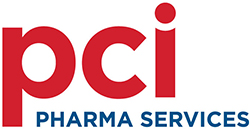The world is facing an increasing threat from counterfeit, misbranded or diverted prescription drugs, with government leaders, politicians and executives from pharmaceutical providers now driving efforts to develop methods that reliably track and trace prescription drugs.1 The World Health Organisation estimates that counterfeit drugs make up around 1% of the supply in developed countries and 30–40% in developing countries. Though the 1% figure seems small, it represents millions of prescriptions in the US alone, which has a market of 246 million prescriptions annually.2
There is no doubt that the presence of counterfeit drugs in the market poses a real threat to the health and well-being of patients.3 Counterfeit drugs specifically represent a threat in emerging markets. In this era of globalisation, the supply chain for genuine pharmaceuticals has grown longer, and every link offers an opportunity for counterfeiters; those areas that are increasingly vulnerable include the Asia Pacific regions,4 which are easier to penetrate and where the demand for low-cost medication is high.
An increasingly fragmented supply chain has resulted in a lack of transparency and increased difficulties in providing a full genealogy of medicines in the industry. To tackle the issue of counterfeiting effectively, the pharmaceutical industry, regulatory bodies, wholesalers and retailers are united in an effort to establish a standardised identification solution.

